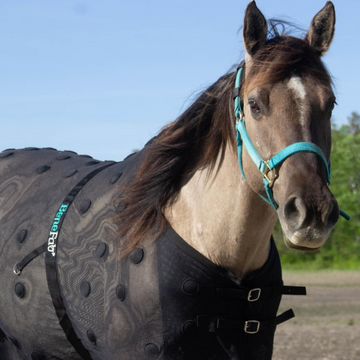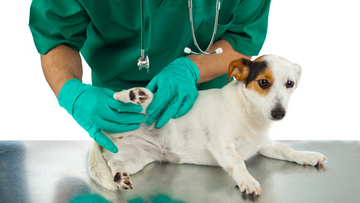Dog Hip Dysplasia
Hip dysplasia in dogs is a common genetic condition. Hip dysplasia affects a dog's hip joints, causing mobility issues and discomfort. While any breed of dog can develop hip dysplasia, it is more common in large-breed dogs.
If you are concerned your dog may have hip dysplasia, consult with a veterinarian immediately. The primary symptoms associated with hip dysplasia are:
-
Difficulty standing up from lying position
-
Reluctance to run (and walk in severe cases)
-
Reluctance to jump
-
Change in gait
-
Signs of pain
-
Stiffness
Causes of Hip Dysplasia

Hip dysplasia is primarily a genetic condition. Large breeds such as German Shepherds, Retrievers, and Rottweilers are especially prone.
However, environmental factors and lifestyle can also play a role in the development of hip dysplasia. Obesity and rapid growth can also cause issues in the hip joint.
Diagnosis of Hip Dysplasia
If your veterinarian suspects your dog is suffering from hip dysplasia, she will perform a physical examination and a set of X-rays. Early intervention is key to managing the pain and degeneration of the hip in your dog.
Stages and Severity
The severity of hip dysplasia is classified into three different stages. Each stage is separated by joint stability, quality of life, and overall mobility.
-
Mild: Some discomfort and joint laxity.
-
Moderate: Increased pain, changes in behavior, reduced mobility.
-
Severe: Significant joint instability, severe pain, and severe drastic behavioral change.
Home Treatment Strategies
Effective treatment of hip dysplasia starts at home. If caught early enough, hip dysplasia can be managed to extend quality of life. Work with your vet to create a plan for treating your dog’s hip dysplasia.
Weight Management and Exercise
If your dog is overweight, your vet will recommend a mix of diet and exercise to help your dog reach a healthy weight. You’ll see a big improvement in how your dog moves, behaves, and plays once they’re not overweight.
Initially, try short walks with your dog to increase his stamina. If he tolerates it well, you can increase the length and speed. Additionally, swimming is an excellent way to exercise with your dog without straining his joints. Finally, massage and stretching can help relieve pain from hip dysplasia.
Pain Management
Once hip dysplasia has progressed, managing your dog’s pain will be one of your primary concerns. Your veterinarian may suggest treatments such as:
-
NSAIDs to reduce inflammation and relieve pain
-
Wearable aids
-
Joint supplements
-
Acupuncture
Wearable aids provide support to your dog’s hips without having to give your dog medicines or supplements. The Canine Comfort Suit provides support while also helping to relieve inflammation. It helps provide support through the back and hips. Once adjusted to it, your dog can wear this suit all the time.
Some supplements that help with joint inflammation are:
-
Glucosamine
-
Chondroitin
-
Omega-3
-
MSM
Glucosamine and chondroitin reduce inflammation and support cartilage in the joints. Omega-3 decreases joint stiffness. Finally, MSM is another type of anti-inflammatory supplement.






















